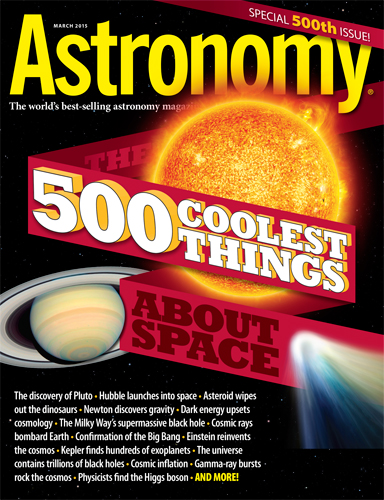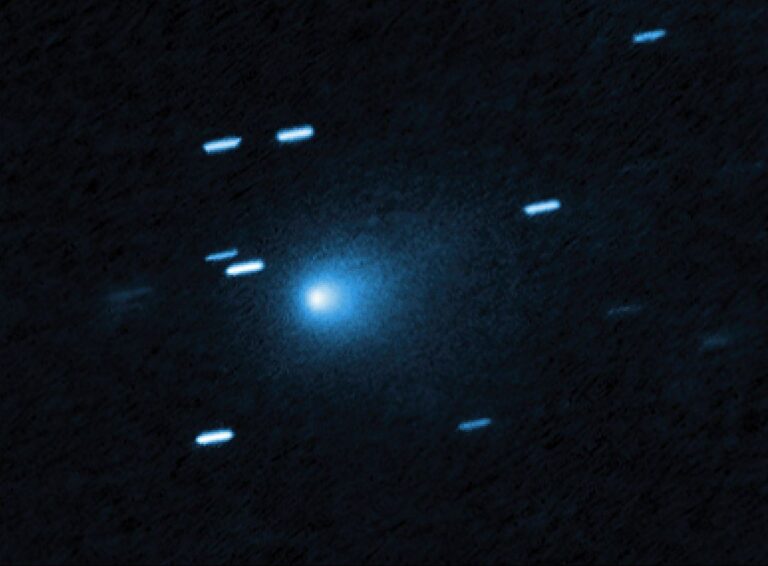Key Takeaways:
We all know astronomy is cool. But have you ever sat under the stars and had a conversation about the most fascinating things in our beloved science? The editors of Astronomy have. And they thought it a big enough topic to bring to their readers. But instead of printing a “Top 10” or even a “Top 100” (both popular formats), they waited for the 500th issue of Astronomy magazine in order to devote it to the 500 coolest things about space.
Boasting an additional 16 pages, the March issue provides an easily digestible history of how human knowledge of space has expanded from the time of petroglyphs to last year’s historic comet landing and beyond. You’ll find topics on every aspect of the cosmos (in no particular order), from the incredibly small (the Higgs boson) to the impossibly large (the expanding universe). The editors have included lots of “firsts,” the most epic discoveries, and the best technological achievements. You’ll find facts about stars, planets, constellations, galaxies, and even the stuff we can’t see.
Here is a sampling of facts contained within the issue:
- “#10: The most luminous star visible to the naked eye, 34 Cygni, outshines the Sun by 610,000 times.”
- “#13: If Earth were a tennis ball, the Sun would be a sphere 24 feet across approximately 0.5 mile away.”
- “#75: One two-billionth: The amount of the Sun’s energy that falls to Earth.”
- “#94: Venus has no seasons because of its mild tilt, but multiple impacts pushed Uranus on its side, making for seasons that last 21 years.”
- “#103: Astronomers have used the Hubble Space Telescope to estimate that a whopping 125 billion galaxies populate the visible universe.”
- “#359: Driving a car to the nearest star at 70 mph would take more than 356 billion years.”
- “#448: Jupiter could contain the other seven planets in just 70 percent of its volume.”
- “#473: The process of falling into a black hole—getting more and more stretched out—is known as spagettification.”
Readers can also share which of the 500 is their favorite anecdote for a chance to win a Celestron telescope with the Coolest Space Facts Contest.
Check out all of the facts, firsts, and discoveries in the March issue of Astronomy magazine, on newsstands February 3.
March sky events visible without optical aid
- March 1 — Venus and Mars appear together in the early evening sky.
- March 12 — Saturn and a Last Quarter Moon make a pretty pair before dawn.
- March 20 — A total solar eclipse occurs along a narrow path that cuts across the waters south and east of Iceland.
Also in the March 2015 Astronomy
Snapshot, Breakthrough, Astro News, Ask Astro, Bob Berman’s Strange Universe, Glenn Chaple’s Observing Basics, Stephen James O’Meara’s Secret Sky, Astro Sketching, New Products, Letters, Web Talk, Reader Gallery, and Final Frontier.
Astronomy offers you the most exciting, visually stunning, thorough, and timely coverage of the heavens above. Each monthly issue includes expert science reporting, vivid color photography, complete sky-event coverage, spot-on observing tips, informative equipment reviews, and more. All of this comes in an easy-to-understand user-friendly style that’s perfect for astronomers at any level. Contact Astronomy, the world’s best-selling astronomy magazine, at 262.796.8776 or email editor@astronomy.com.










